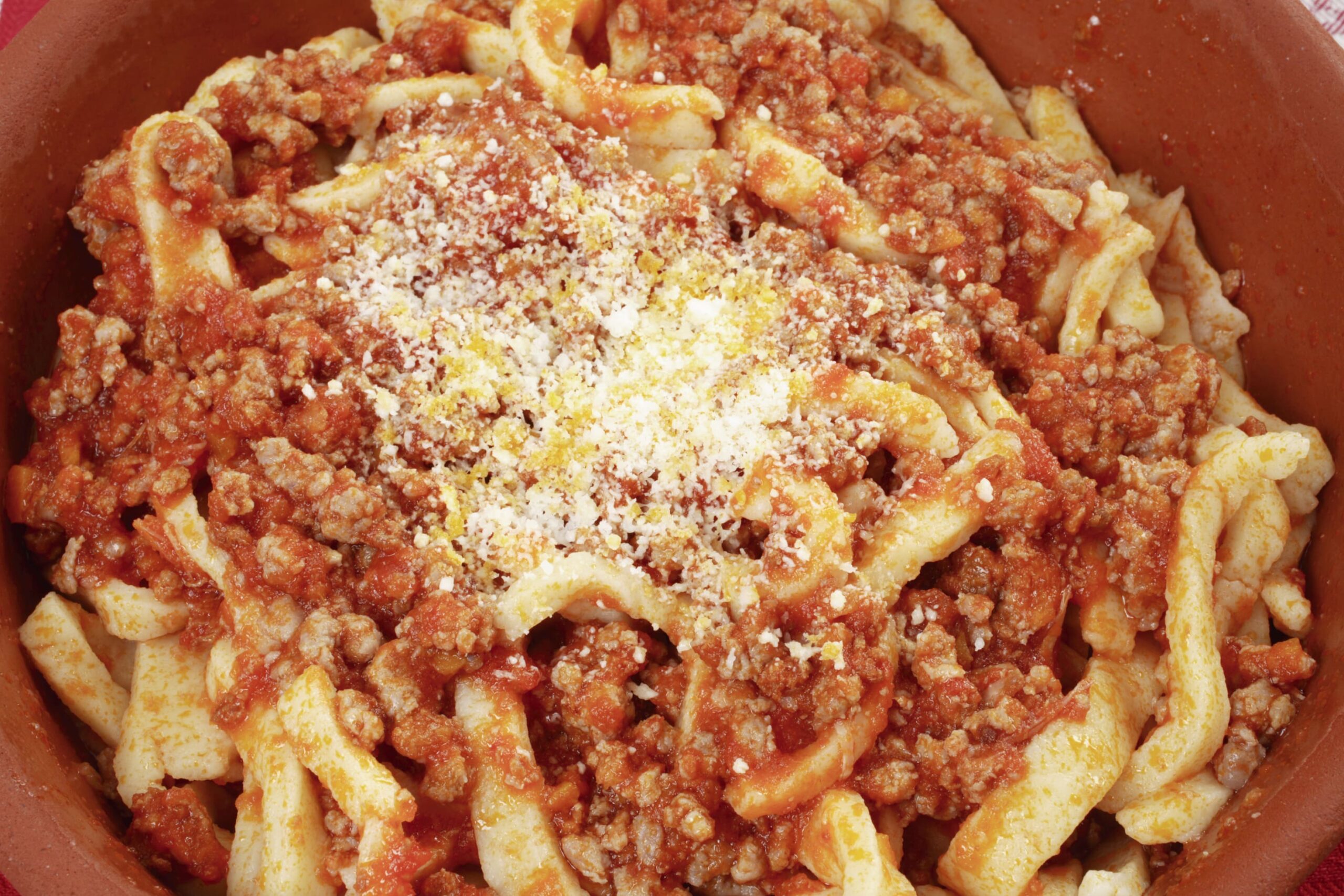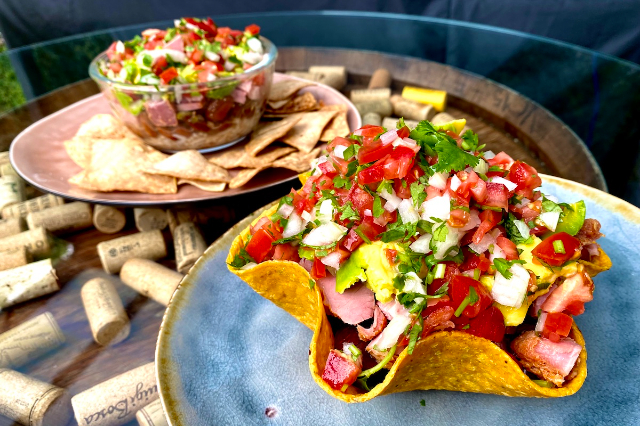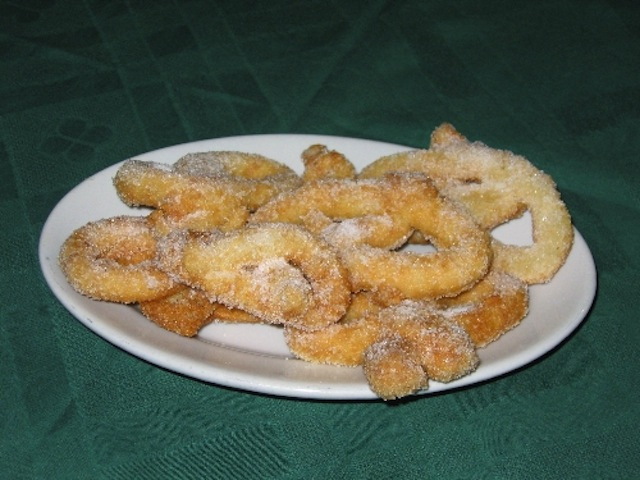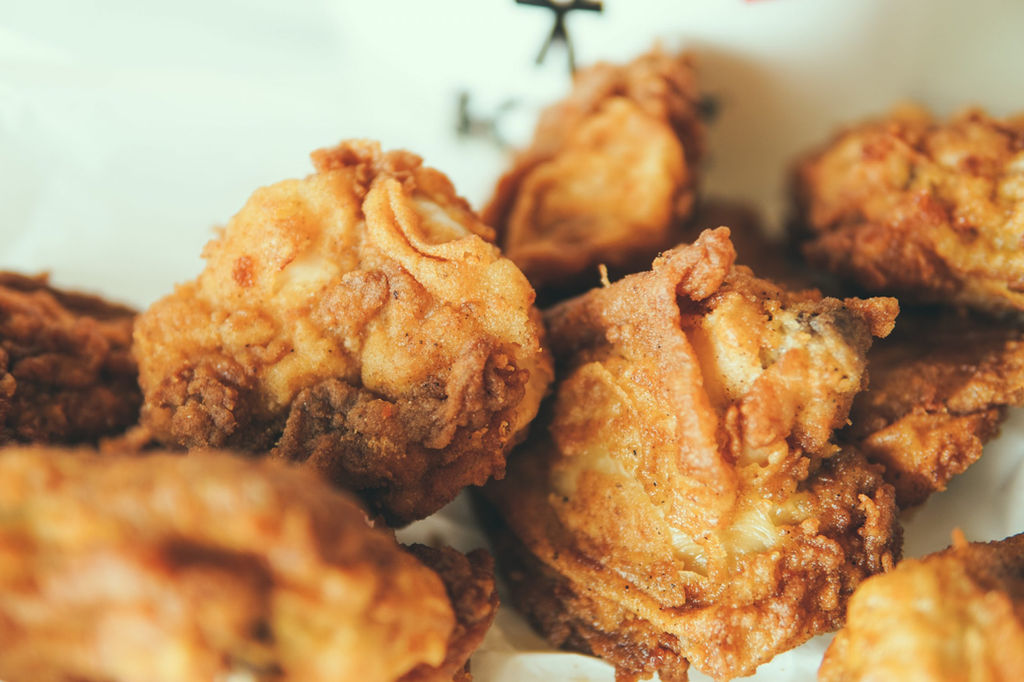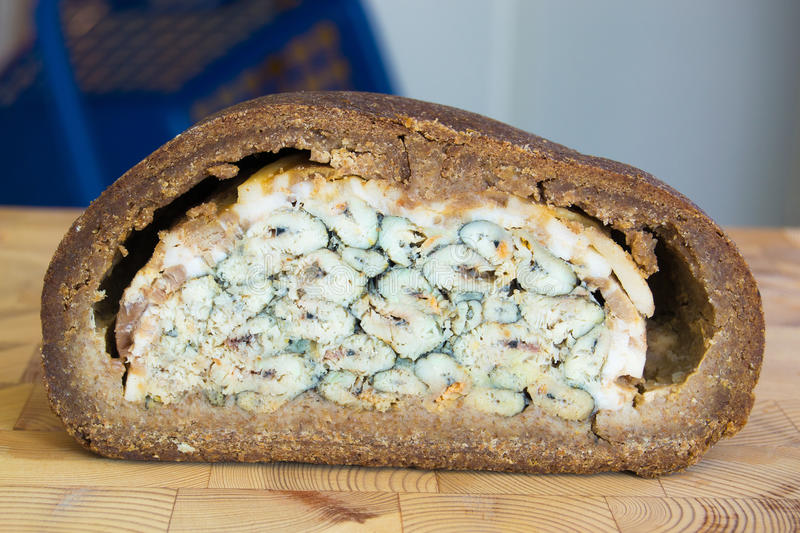This is a type of “maccherone alla chitarra” (a square-section macaroni) but thicker than normal, and popular in the mountains and foothills of the Province of Chieti. This unusual pasta is made with water, durum wheat flour and egg white. A well of flour is made on a marble worktop or “spianatora” (a large wooden board normally used for making pasta or polenta, placed on the kitchen table) and egg white poured in with a little additional water before working it all together to produce a fairly solid pasta. When the dough is ready it is rolled out, not too thinly, and is then folded over to form a sort of rolled scarf, then it is cut with a knife to achieve a thicker section.
The most popular sauce served with the “corde delle chiochie” (as with any long pasta) is, of course, one of the two Abruzzo classics, lamb sauce or, even better, “sugo alle tre carni” (using special cuts of three meats: beef or veal, lamb or mutton and pork), extra virgin olive oil, onion, sticks of celery, carrots, cloves of garlic and a glass of Montepulciano d’Abruzzo D.O.C. to reduce in the meat. While browning and cooking the meat, a bunch of herbs (such as rosemary, laurel and sage) may be added but should be removed before adding the peeled tomatoes. The cooking time varies according to taste and habit, but generally a minimum of one hour to over
two hours, until the sauces are the right density. The dish is served with a generous sprinkling of grated Pecorino cheese. “Chiochie” were a type of footwear worn by shepherds and this pasta resembles the long leather
thongs used to bind the boots around the ankle. In the Sagittario Valley, in the Province of L’Aquila, this pasta is also called “stringhitelle” (shoe laces).
“Corde de le chioche” can also be served in an earthenware terrine or soup bowl, and recommended wine is a young fermented red or Cerasuolo d’Abruzzo DOC.
